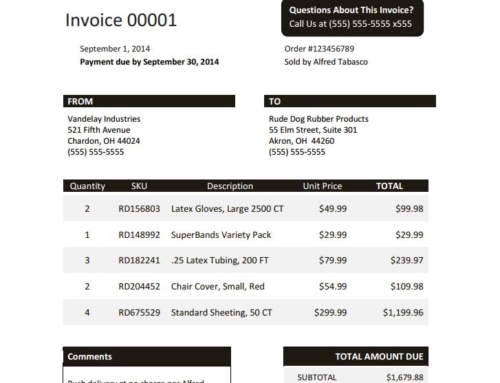A client or customer account statement includes all the invoices for a particular account over a set period of time, usually one month. Many customers request or require statements from the accounts receivable department on a regular basis. For some companies, they may not be able to pay on an invoice until a statement has been sent to them. In order to collect as quickly as possible, you will want to have a customer statement template on hand that you can quickly input customer information and send along to those who require a customer statement.
Here is how to write a customer statement and the elements you will need to get started:
NAME AND ADDRESS
You should be including not only your customer’s name and address on the statement, but your company name and address. This will help when they are looking for a place to remit payment to. If you have a customer self-service portal where they can make payment, include the URL link.
REFERENCE
The reference number should be included at the top of the customer account statement. This allows the customer to easily recognize that this account belongs to them, as well as give your collectors a number they can reference if the customer calls in with any questions.
DATE
You should always date your client account statement to make clear what month this statement is reflecting since this includes all of the client’s invoices. Whether you date the statement as the last day of the month it is reflecting or the first, simply pick a process and stick to it.
OPENING BALANCE
The opening balance is whatever amount is owed from the previous statement last month. This would be an overdue balance and should be required to pay ASAP.
HEADINGS
These are the columns that are used to organize each individual invoice. The headings should include:
- Date
- Invoice number
- Description of sale
- Invoice amount
- Payment made
- Remaining balance
TOTALS
If you are included things like sales tax, interest of freight costs, you will want to add an area for subtotals, so the customer is aware of the additional costs and what the subtotal was before those additional costs were added. The most important total to include, however, is the final cost. Make this final total very clear to customers by bolding, increasing font size or highlighting.
After you have made your customer statement template, save it somewhere that all your collectors have access to. They can then reference it and add their customer’s information to it. To save even more time, consider using an accounts receivable automation tool to pull the customer’s information in. This way, you can automatically send a statement whenever requested without doing much other than hitting the send button.




